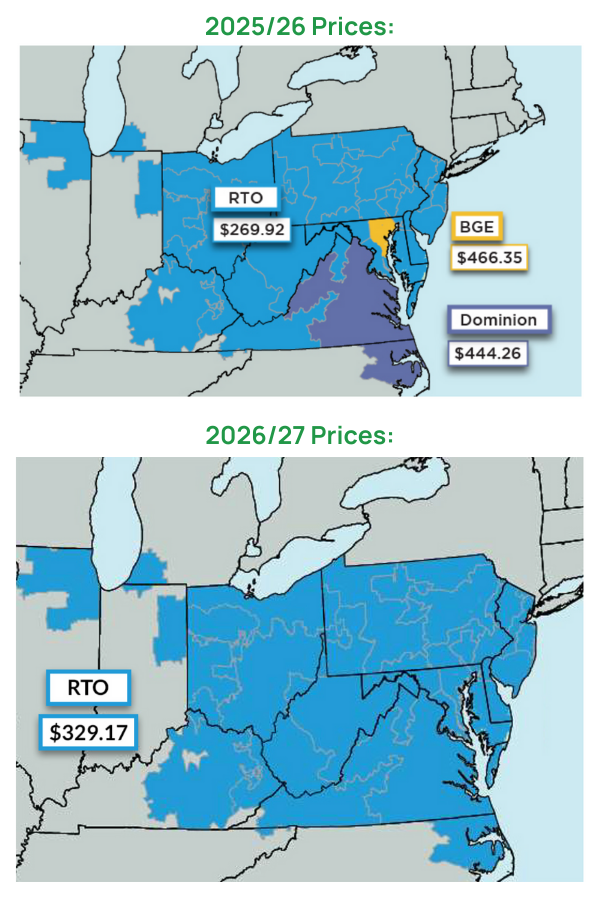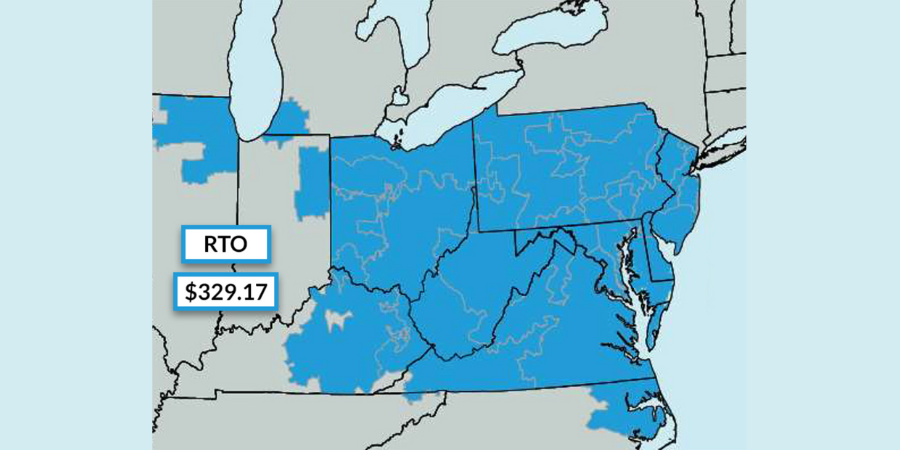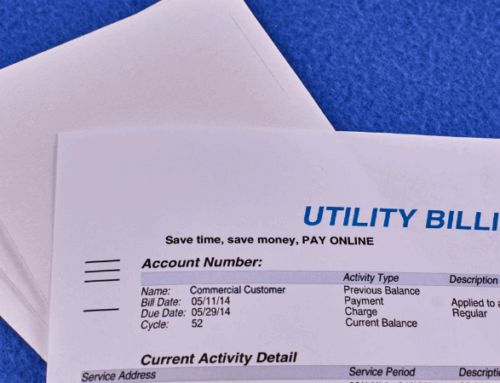On July 22, 2025, PJM Interconnection released the results of its 2026/2027 Base Residual Auction (BRA), a key indicator of resource adequacy for the region. The auction cleared at the maximum FERC-imposed cap of $329.17 per megawatt-day (MW?day), marking a 22% increase from the prior year’s record level. This outcome reflects escalating demand and tightening capacity throughout PJM’s 13-state footprint, raising pressing questions about grid reliability and the path forward for energy procurement strategies. For industrial and commercial energy users in PJM, this marks continued elevated electricity prices for the years to come.
PJM BRA 2026/27 Key Results
- PJM cleared 134,311 MW of unforced capacity (UCAP) via the auction, plus 11,933 MW through Fixed Resource Requirements (FRR), totaling 146,244 MW to meet load and reserve needs.
- With forecasted peak load reaching 159,329 MW, up by over 5,400 MW year-over-year, this left the reserve margin razor-thin, just 139 MW above PJM’s reliability requirement of 146,105 MW.
- The price cap prevented runaway cost spikes as PJM simulations showed prices could have soared to $388.57/MW?day absent the FERC cap.
- The uniform clearing price across all zones, marking a rare instance without locational price separation such as those seen in BGE or Dominion zones last year, underscores both supply constraints across the entire region.
Here are the current vs. future PJM capacity rates:

Supply Mix
The 2026/2027 PJM BRA revealed a resource mix still dominated by traditional fossil fuels, with natural gas making up 45% of cleared capacity, followed by coal at 22%, nuclear at 21%, and smaller shares from hydro (4%), wind (3%), and solar (1%). The remaining 4% came from demand response and other resources, reflecting ongoing diversification in PJM’s resource stack. These shifts were partly the result of updated accreditation under PJM’s Effective Load Carrying Capability (ELCC) methodology and expanded “must-offer” rules.
What The Auction Means For Commercial & Industrial Users
Though capacity costs only make up a small portion of total retail electricity rates, PJM estimates that these auction results could translate into a 5% increase in electricity costs, up from current highs. End users with load flexibility, such as those in demand response programs or with on-site generation, are encouraged to strategically lower demand during coincidental peak periods each summer in an effort to combat high capacity costs. Here are some strategies for lowering your bills despite recent auction results:
- Understand your current capacity tags and set target goals
- Ask your energy broker to notify you of potential coincidental peak hours
- Set demand reduction schedules to be implemented during any potential peak
- Enroll in a formal demand response program and follow the guidelines exclusively
- Evaluate your electricity supply agreement to determine how capacity is billed (if and when reduced)
Need Help With Your Capacity Strategy?
The 2026/2027 BRA offers a stark snapshot of PJM’s shifting landscape of record-high prices driven by supply constraints and robust demand. Early signs of new capacity entering the market suggest that price signals are beginning to work. For commercial and industrial energy buyers, now is the time to reevaluate procurement strategy to account for these new price increases. At Diversegy, our team has a deep understanding of the PJM market, capacity prices, and strategies for reducing business electricity costs. Contact us today for a free evaluation.



